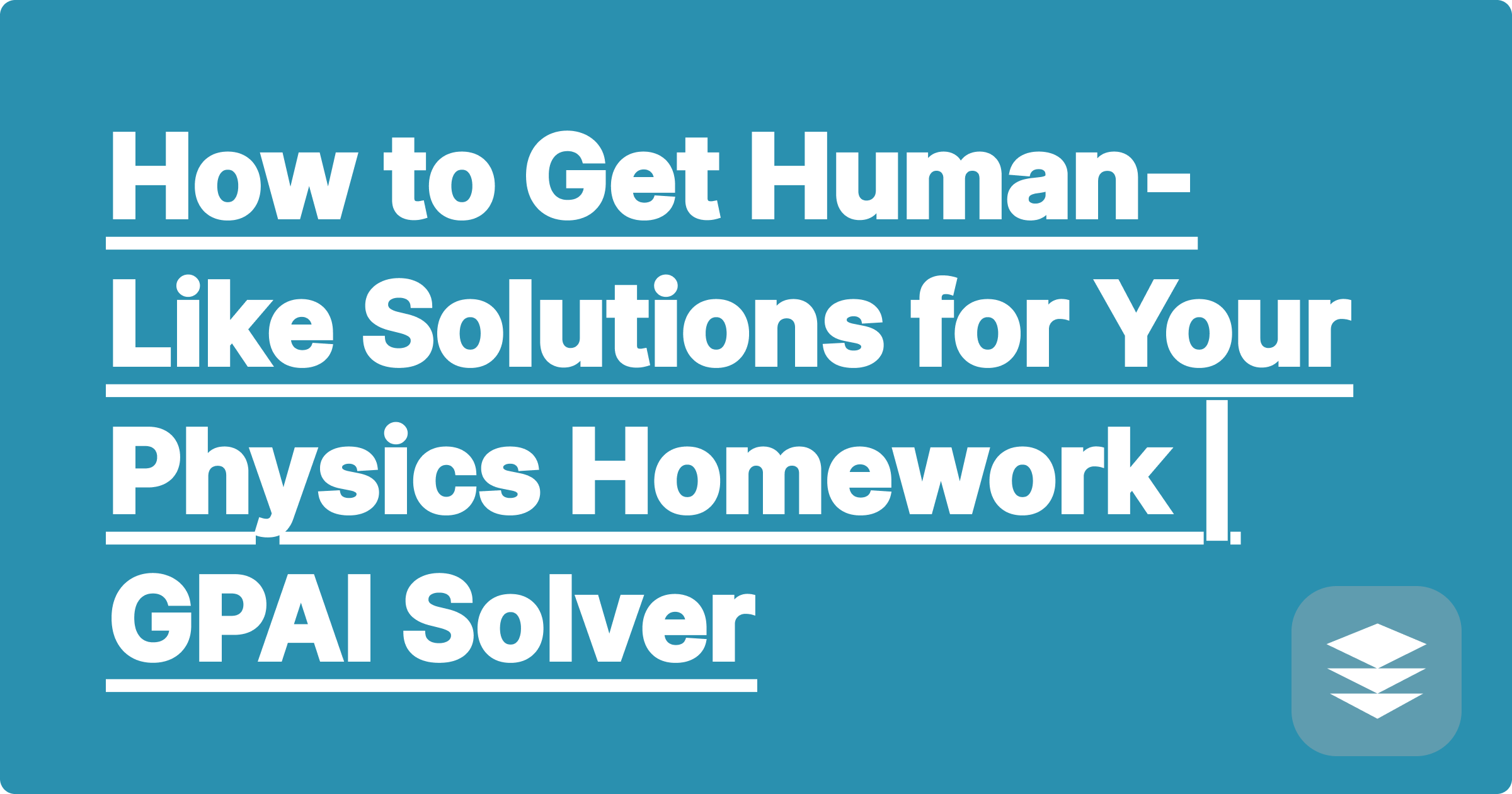
You’ve been there. Staring at a complex physics word problem, you finally turn to an AI for help. It gives you an answer, but the explanation is… clunky. Robotic. It’s the kind of solution that screams, "I was generated by an algorithm!" Submitting that feels risky, and you haven’t really learned the reasoning behind the answer.
The core of the problem isn't just getting the right answer; it's about showing your work in a way that demonstrates genuine understanding. This is where a standard calculator or a basic AI tool falls short. You need something more sophisticated—a natural language physics solver that explains the "how" and "why" just like a top student or a helpful TA would.
This guide will walk you through how to get high-quality, human-like solutions for your physics homework, ensuring you can submit your assignments with confidence and actually learn the concepts along the way.
According to Google's own guidelines on creating helpful content, the goal is to provide information that is reliable and people-first. For a student, a "helpful" solution isn't just the final number; it's an explanation that helps you learn.
Here’s why a human-like approach is critical:
Most AI homework tools are designed for one thing: speed. They often skip crucial reasoning steps, leading to solutions that are hard to follow and feel unnatural.
Let’s compare the two approaches:
FeatureStandard AI SolverA Human-Like AI Solver (like GPAI Solver)Explanation StyleRobotic, often just lists formulas.Conversational and conceptual. Explains why a formula is used.Showing WorkJumps from one step to the next with little context.Clearly outlines each logical step, from identifying variables to the final answer.Academic RiskHigh. Easily detectable as AI-generated.Low. The output is designed to be indistinguishable from a student's own work.Learning ValueMinimal. You get an answer, not an understanding.High. It functions like a personal AI tutor, guiding you through the logic.
Getting a solution that works for you is a simple, four-step process.
First, ensure your problem is clearly stated. Upload a high-quality photo of your homework problem, a PDF of the assignment, or simply type the text into the problem area. The clearer the input, the more accurate the analysis.
[Image: A clean, well-lit photo of a physics problem on a piece of paper, ready to be uploaded to GPAI Solver. Alt-text: A user taking a picture of their physics homework to upload to an AI that shows work.]
This is where GPAI Solver truly shines. Unlike other tools, it doesn't give you a one-size-fits-all answer. It offers three distinct modes tailored to your specific needs.
Once GPAI Solver provides the solution, don't just copy it. Read through the "Humanized" or "Step-by-Step" explanation. Does it make sense? If a particular step is confusing, use the chat feature to ask for clarification, like "Can you explain why you used the conservation of momentum here?" This active engagement is what turns a simple tool into a powerful learning assistant.
"The goal isn't to let AI do the work for you. It's to use AI as a tireless, 24/7 teaching assistant that helps you master the work yourself. That's how you build real expertise."
After understanding the AI-generated solution, try to re-write it in your own words. This final step solidifies your understanding and ensures the work you submit is a true reflection of your knowledge, powerfully assisted by AI.
Here are some common questions STEM students have about using AI for their homework:
Q1: Is using an AI homework solver like GPAI considered cheating?
A: It depends on how you use it. If you blindly copy-paste answers, you're not learning and are likely violating your institution's academic integrity policy. However, if you use a tool like GPAI Solver's "Step-by-Step" mode to understand the process and the "Humanizing" mode to learn how to articulate your thoughts, you are using it as an advanced learning tool, which is a key part of modern education.
Q2: Can an AI that shows work handle complex, multi-part physics problems?
A: Yes. Advanced models like the one powering GPAI Solver are designed to break down complex word problems into smaller, manageable parts. It can identify the different stages of a problem (e.g., an object sliding down a ramp and then launching into the air) and solve each part sequentially, showing the full chain of logic.
Q3: How is this different from just using ChatGPT or other large language models?
A: General-purpose models are powerful, but they aren't fine-tuned for academic problem-solving. They can make subtle physics errors, provide inefficient solutions, or produce text that is easily identifiable as AI-generated. GPAI Solver is specifically designed for STEM homework, focusing on logical accuracy and providing outputs (like Humanized and Hand-written modes) that are tailored for students' needs.
The line between getting help and simply cheating is blurring, but the path to true learning is clearer than ever. By leveraging a natural language physics solver, you can transform your homework from a chore into a genuine learning opportunity. You get the help you need, learn the concepts for your exams, and submit work that you can be proud of.
Ready to see the difference a human-like solution can make?
[Try GPAI Solver today and get 100 free credits upon signing up. Elevate your homework and your GPA.]
GPAI - The Future of AI-Powered Academic Assistance
GPAI Solver: Redefining Problem-Solving in STEM Education
GPAI Cheatsheet: Your AI-Powered Modular Study Companion
GPAI Notetaker Rethinking Note-Taking for STEM: A Smarter, Context-Driven Approach
How to Get Human-Like Solutions for Your Physics Homework | GPAI Solver
Submit Your Math Homework in AI-Generated Handwriting | GPAI Solver
AI Math Tutor vs. Human Tutor: Which is Better for Calculus? | GPAI Solver
Best AI Homework Helper for College STEM Courses: 2024 Comparison | GPAI Solver
How to Check Your Math Work for Errors with an AI | GPAI Solver
AI for Engineering Students: A Thermodynamics Problem Solver | GPAI Solver